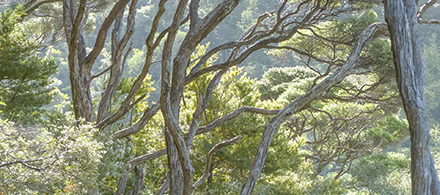A New Zealand government environmental report is a clear indication that trees are good for soil and water health, according to the Forest Owners Association. Source: Timberbiz
The Ministry for the Environment’s latest environmental report scores exotic forestry highly for its low impact on soils.
It also identified exotic forests as the land use by far the least affected by low macroporosity, which is an indication of poor drainage.
The analysis found only 11% of exotic forests were below the macroporosity target range, whereas 75% of lifestyle blocks had the problem.
Likewise, the analysis found only 12% of exotic forest soils had higher than a target range of phosphate. This element can have downstream environmental impacts, such as lowering water oxygen levels or promoting toxic algal growth.
This forest percentage compares favourably with dairy and cropping properties, where 61% of sites were above the target range.
Fertiliser is applied to exotic forests very rarely, and the phosphate levels here are most likely to be a temporary result of recent planting trees on farmland.
Forest Owners Association President Phil Taylor says the report is a clear indication that trees, whether exotic or indigenous, are good for soil and water health.
“All forests prevent erosion, filter water and reduce flood damage. With commercial pines there is a huge advantage in rapid carbon sequestration to combat climate change as well,” he said.
Mr Taylor said another part of the report assessed the higher Land Use Capability classes, 1-4 as “most productive for pasture and forestry”.
“I hope our primary sector ministers take that point on board. They need to realise that forestry is a valid productive use choice for landowners,” he said.
“The ministers’ suggestions during the election campaign that this productivity only applies to farming are quite wrong and so they ought to drop their ideas of preventing productive and profitable forestry on these land classes.”








